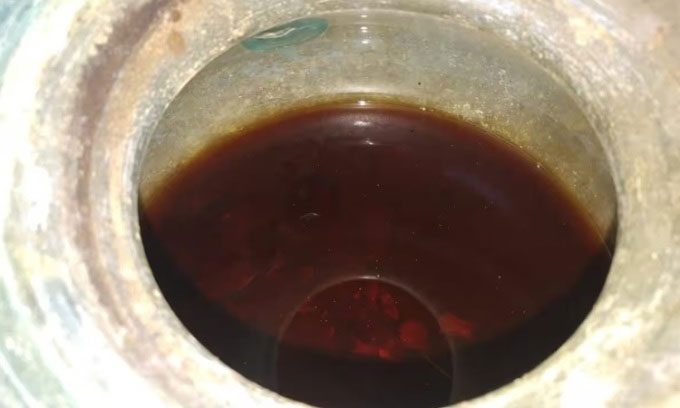The World’s Oldest Wine Bottle Containing Ashes of a Man in a Roman Tomb Reveals Burial Customs from the 1st Century.
Earlier this year, archaeologists announced that a strange liquid inside a 2,000-year-old glass bottle from the Andalusia region is the oldest wine ever discovered. The wine bottle was found in 2019 in a Roman tomb in Carmona. Researchers have now found the cremated remains of a man soaked in liquid dating back to the 1st century, according to a report from the Independent on September 30.

2,000-year-old Roman wine in a glass bottle with a reddish-brown color. (Photo: Juan Manuel Román)
This wine bottle predates the Speyer wine bottle discovered in 1867, which dates from the 4th century. “Initially, we were astonished by the liquid preserved in one of the urns containing ashes,” said archaeologist Juan Manuel Román from Carmona. To confirm that the liquid was wine, the research team conducted a series of chemical analyses to evaluate the pH, organic matter, and salt composition. They then compared the detected chemicals with modern wines from Montilla-Moriles, Jerez, and Sanlúcar.
The key to determining that the liquid was wine lies in the polyphenol compounds found in all types of wine. Scientists identified seven polyphenol compounds also present in Montilla-Moriles, Jerez, and Sanlúcar wines. However, tracing the origins of this ancient wine is challenging due to the lack of contemporaneous samples for comparison.
Meanwhile, the existence of human cremated remains reveals more about the burial customs common in Spain during Roman times. The remains were soaked in the wine along with a gold ring. The fact that the remains belonged to a man is not coincidental, according to the archaeological team. Women in ancient Rome were banned from drinking wine, which was a beverage reserved for men. The presence of ashes in the bottle reflects the gender discrimination in Roman society regarding burial rituals.
Another vessel found in the tomb contained the remains of a woman but had no wine at all. Instead, it held three amber jewelry pieces, a perfume container, patchouli, and silk fabric. Wine, perfume, rings, and many other items were placed in tombs for burial, stemming from the belief that the deceased needed them for their journey to the afterlife.


















































